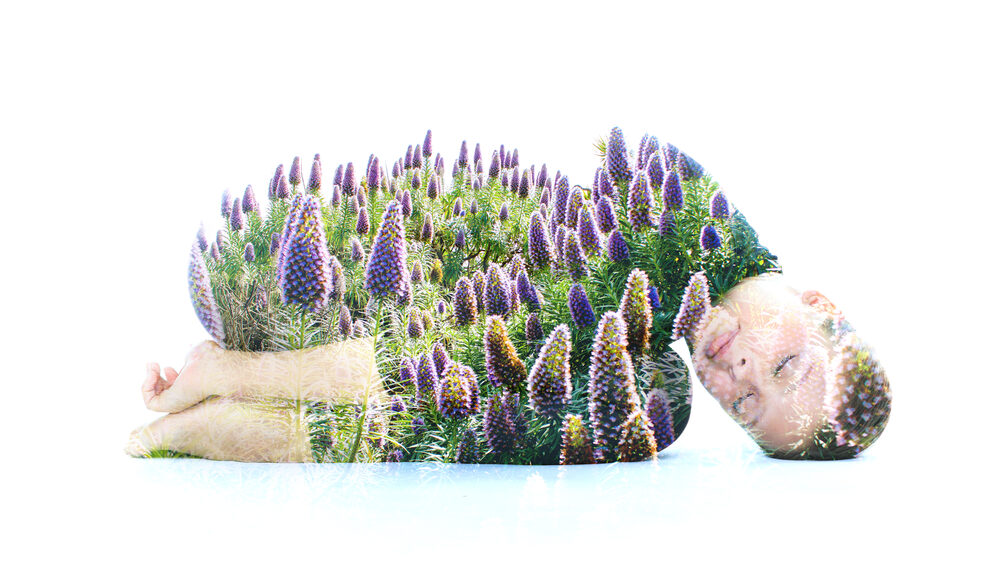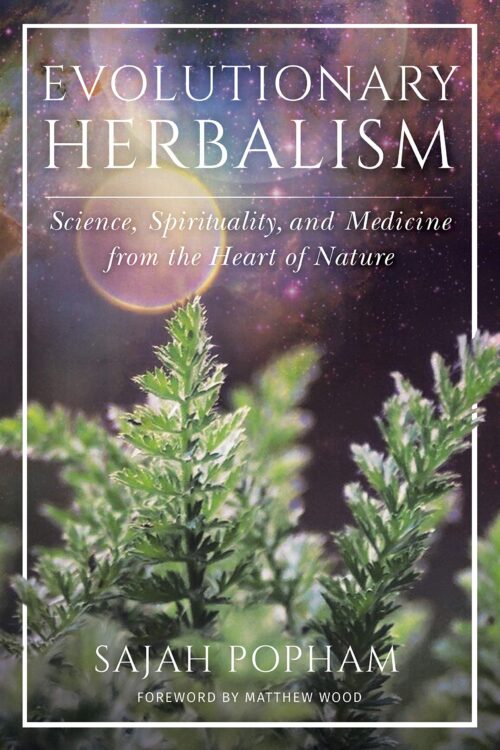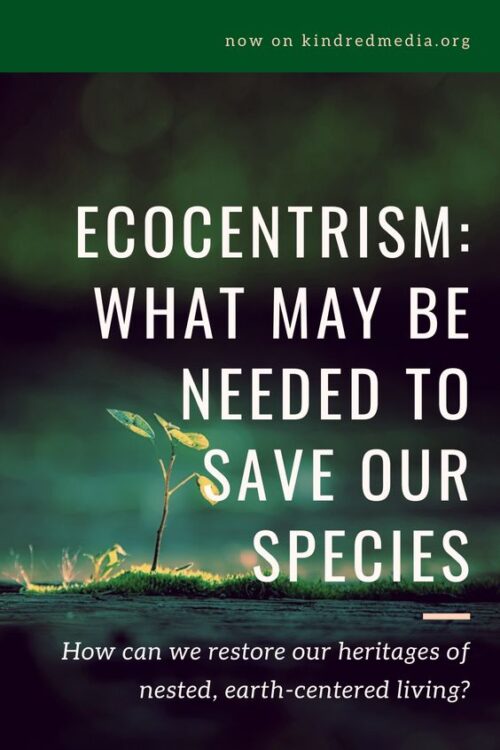The body can be viewed as an ecosystem or machine, and these varying paradigms significantly impact how you view and treat disease, and certainly how you use herbal medicines. With each offering a unique perspective to healing, it’s the combination of both that is stronger than its parts.
In this Evolutionary Herbalism post, you’ll learn:
- What vitalism is and why it matters
- The biomedical versus vitalist approach to healing
- The language of the six tissue states
- How to combine these two perspectives in your practice
Vitalism is a critical element of holistic herbal medicine, which has been practiced successfully for thousands of years before the introduction of a mechanical and biochemical perspective of treating the body… Through having an ecological view of the body and how your organs, systems, and tissues work together to create a symphony, you can identify which song is being played and which notes need to be adjusted to achieve greater harmony.
Sajah Popham
The term sounds simple enough, but what does it actually mean?
Vitalism serves as the foundation for all traditional models of natural medicine, including herbalism. This perspective states there is a life-giving principle, a spirit, if you may, within all things. And this principle is highly intelligent, revealing a deeper meaning behind a set of characteristics exhibited in a person or plant.
As herbalists, it’s our job to look at those patterns and decipher them as if they were a language. What are they trying to communicate, and what messages do they share regarding health?
By adopting the vitalist lens when working with people and plants, you can provide extraordinary healing that is unparalleled to the effects of the allopathic model, which tends to operate instead by ticking each symptom off at a time. Rather than addressing your health with the randomness of a game of tic-tac-toe, the vitalist perspective focuses on the factors that contribute and lead to the malady itself.
The Biomedical Perspective
The biomedical perspective adopts a mechanistic view of the body.
The organs, tissues, and associated systems are likened to a set of gears. When they are working as they should, the body runs like a well-oiled machine. However, when someone is sick and their organs are in a state of distress, the “machine’s” functioning is obstructed. In this case, parts may need to be fixed or replaced to operate smoothly again.
Through the miracles of modern science, such medical procedures save lives daily. However, the “search and replace” approach to healing is often reductionist and overlooks clues that can lead to a greater understanding of the illness at hand, as well as how to safely and effectively treat it.
Although there are herbalists who practice using the mechanical approach to healing alone, it opposes the vitalist perspective, which views the body as an ever-dynamic ecosystem. There are so many factors to account for when someone is ill that a medication or herb selected on their biomedical actions alone cannot address.
Those who practice herbalism using the biomedical perspective alone will consider the chemical constituents and pharmacokinetics of the herbal remedy in mind. Although understanding the biochemical effects of plants benefit and strengthen the practice of any herbalist, this approach can overlook important aspects that are necessary to address when selecting a remedy that will provide optimal support.
By failing to recognize constitutional and energetic patterns, a well-intended herbal plan that possesses all of the “right” herbal actions or constituents may actually lead to further distress over time through generating a constitutional aggravation that contributes to the systemic imbalance rather than providing a solution for it.
When plants are reduced to their constituents alone, it’s time to put on a new pair of glasses.
The Vitalist Perspective
Vitalism is a traditional model and approach to herbalism as well as life as a whole.
The natural world is intelligent, possesses consciousness, and has purpose and meaning. A significant degree of ecological disaster has occurred due to humans seeing themselves as separate from nature; disconnected. By understanding that we are a crucial part of it, we can begin to heal the Earth rather than harm it. From a practical herbalist perspective, vitalism introduces a different way of understanding the body, ultimately leading to a holistic approach to healing through the therapeutic application of plants.
The vitalist practitioner understands that the body, just like nature (because after all the body is nature), is dynamic and intelligent. By paying attention and leaning in to hear what the body is trying to communicate, you can select remedies that support its internal healing mechanisms rather than ones that will allopathically or biochemically suppress symptoms. This is important, because in vitalism the symptom is not the problem, rather, it is the intelligent communication of the body telling us something is wrong.
When working with herbs using the vitalist model, the body is likened to an ecosystem. In the vitalist traditions of both Western and Eastern, Northern and Southern herbal medicine, the human being is seen as a microcosmic reflection of the macrocosm, the universe, and nature. In that way, we see that the human body is a mirror image of the underlying forces of nature. This is a powerful way of seeing the body, for it assists us in relating the underlying functions and anatomy of our body to various ecosystems and to find remedies that best suit them.
A Breath of Fresh Air
Consider the respiratory system. With each inhalation and exhalation, the element of air weaves in and out of the body. When the lungs or respiratory system become imbalanced, they adopt a very specific type of ecosystem.
If someone has a respiratory tract infection, the mechanistic approach is to select a remedy that will kill the virus, bacteria, or pathogen that caused it. In herbalism, these remedies would possess antiviral or antibiotic actions, such as Osha (Ligusticum porteri) or Lomatium (Lomatium dissectum).
While a valuable approach, this is but one element when addressed from the vitalist perspective. Instead of seeking to kill the pathogen alone, herbalists who view the body as an ecosystem would seek to understand the state of the tissues in the body that made it hospitable to that pathogen in the first place.
Through understanding this, you can take steps to eliminate the pathogen while simultaneously encouraging a balance of the tissue state by replenishing deficiencies and decreasing excesses in the body. This is typically accomplished by looking at the energetics of the tissues, or their relative state of temperature, moisture and tone.
By approaching each case with inquiry, you can gain a clearer understanding of the nature of each disease and the imbalances that led to it rather than cleaning up symptoms one at a time.
The Body’s Ecosystem
If you want your crops to grow and thrive, you must know which zone you are growing in, what soil they require, and how much to water them. If you overwater your plants, they can wilt over in distress. If you underwater them, they may dry beneath the sun.
Our bodies reflect nature. Just as each plant requires different care, so do we. Through this lens, you can select herbs that focus on the individual rather than choosing them based on their herbal actions or what symptoms they treat alone. In many traditional models of healing, the tissue states are used as a garden manual for understanding the unique ecosystem that lies behind every illness that exists on Earth.
The six tissue states represent states of excesses or deficiencies in three physiological factors. An irritated or depressed tissue state corresponds to an imbalance of tissue functioning with processes operating too fast or too slow, typically regarded as the temperature. Relaxation and constriction relate to levels of tension of the tissues, either too loose (atonic) or tight. This is the tissue tone. Lastly, torpor and atrophy describe the state of moisture of tissue, either being too damp or too dry.
It doesn’t require much to hear the difference between a wet cough and a dry hacking one. Thus, I find the respiratory system an excellent example to illustrate the concept of ecological physiology and the tissue states that form them.
When there is a productive cough that produces a lot of phlegm and mucus, this is indicative of excess dampness and moisture that is trapped in the lung tissues. This is a striking parallel to a dry, unproductive cough that sounds wheezy and spasmodic. This type of cough is tense, sensitive, and irritable, illustrating a classic hot, dry, and tense cough compared to the former cold and damp one.
An herb like Licorice (Glycyrrhiza glabra) or Marshmallow root (Althea officinalis) are especially indicated for the dry sensitive cough, but typically contraindicated for the cold damp cough. Similarly, those antiviral expectorants Osha and Lomatium discussed earlier are usually too harsh and stimulating for the hot dry cough, but perfect for the cold damp cough. The tricky thing is when you look up “herbs for a cough” online or in a book, it’s common to see all of these expectorant remedies lumped together, even though they have very different energetics.
By taking a step back and assessing the ecosystem that produced these symptoms, you can gain a larger perspective into the functioning of one’s body as well as how to choose plants that will restore their constitution into balance.
Just as we see ecological characteristics in humans, we can view them in plants as well. A great example illustrating this is with the herb Angelica (Angelica archangelica). This herb prefers to grow in cold and damp environments. However, despite its growing conditions, Angelica (Angelica archangelica) is a warming herb that offers stimulation and improved circulation to the reproductive organs, liver, and digestive system. Warming and drying, this plant provides healing for the cold and damp constitution that calls for it. In other words, Angelica (Angelica archangelica) grows in the same type of ecosystem in nature that it treats within the body.
The closer you look, the more you can see this fractal-like pattern that depicts the ecosystem in which a plant grows and how that often mirrors the conditions the plant treats within the body.
Another example that illustrates how the tissue states influence the body’s ecology is constipation. From a mechanistic perspective, constipation is reduced to infrequent bowel movements that require a stimulant laxative to jolt the bowel into producing movement.
Although this approach might seem simple, it overlooks the root cause, which can result in further digestive issues down the line. Furthermore, pharmaceutical laxatives or herbs with these actions, such as Senna (Cassia angustifolia), can result in a dependency response that ultimately leads to distress on the gastrointestinal system. We can do better than that.
Different people will experience constipation due to different tissue states. Some individuals will be constipated because their mucosal membrane is dried out and poorly lubricated, while others might be because there is damp accumulation and stagnation in the colon.
Someone might be constipated because they are nervous and tense, resulting in excess constriction in the colon that is like “a kink in a garden hose.” Lastly, constipation may occur when someone has an excess pattern of cold. In this case, there is a depression of the normal functioning of their organ systems that result in poor digestive assimilation and elimination. This may be due to insufficient digestive enzymes or bile, for example.
Each of these tissue states requires different care, even though they result in the same symptom. For example, you would not give a drying herb to someone who is experiencing constipation due to excess dryness, nor would you give a cooling herb to someone experiencing a cold tissue state. Someone with a dry bowel will respond well to an herb like Marshmallow root (Althaea officinalis), which is demulcent, moistening, and cooling. Another herb that may work well, in this case, is Aloe Vera (Aloe vera), which provides similar qualities along with an astringent action which provides a toning action to a bowel that is too lax.
If someone is constipated because there is excess dampness, they will respond well to warming circulatory herbs or bitters, which clear stagnation. Furthermore, someone with excess tension will respond well to antispasmodic herbs that target the intestinal tract and nervines that soothe the mind, such as Wood Betony (Stachys officinalis), an herb with a specific indication for excess tension “in the neck up.” Lastly, someone with a tissue state imbalance of excess cold will respond to warming, circulatory and carminative remedies such as Cardamom (Elettaria cardamomum), Anise seed (Pimpinella anisum), and Ginger (Zingiber officinale).
By understanding the variables of each ecosystem, you can look beyond the herbal actions of a plant and into their unique energetics to determine a remedy that will truly suit the person you are providing care for.
A Symphony of Healing
Vitalism is a critical element of holistic herbal medicine, which has been practiced successfully for thousands of years before the introduction of a mechanical and biochemical perspective of treating the body.
These two models are not necessarily in conflict with each other. Rather, it’s in how you apply them that determines their efficacy. If you practice herbalism using the mechanical model, you likely have a great wealth of information about the different biochemical uses for each plant. This isn’t for naught and should not be dismissed when furthering your practice.
Instead, you can use this information to enrich your understanding of people and plants by drawing in the vitalist perspective and using them side by side. For example, you can look for underlying imbalances of excesses or deficiencies in the body rather than seeking herbs that match each symptom allopathically. By combining the two approaches, you can generate a more holistic understanding of how our bodies function and what they need to thrive.
Through having an ecological view of the body and how your organs, systems, and tissues work together to create a symphony, you can identify which song is being played and which notes need to be adjusted to achieve greater harmony.




